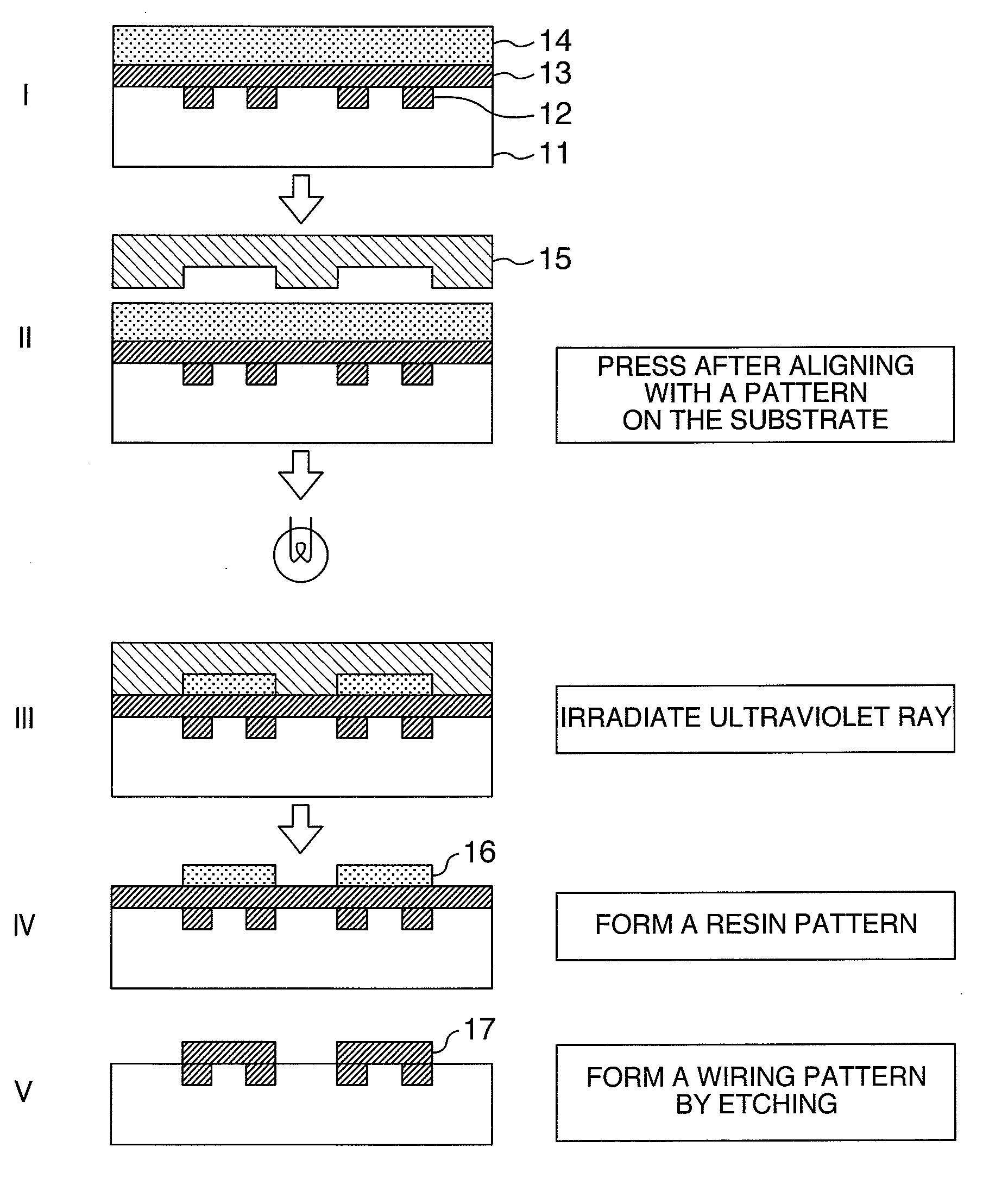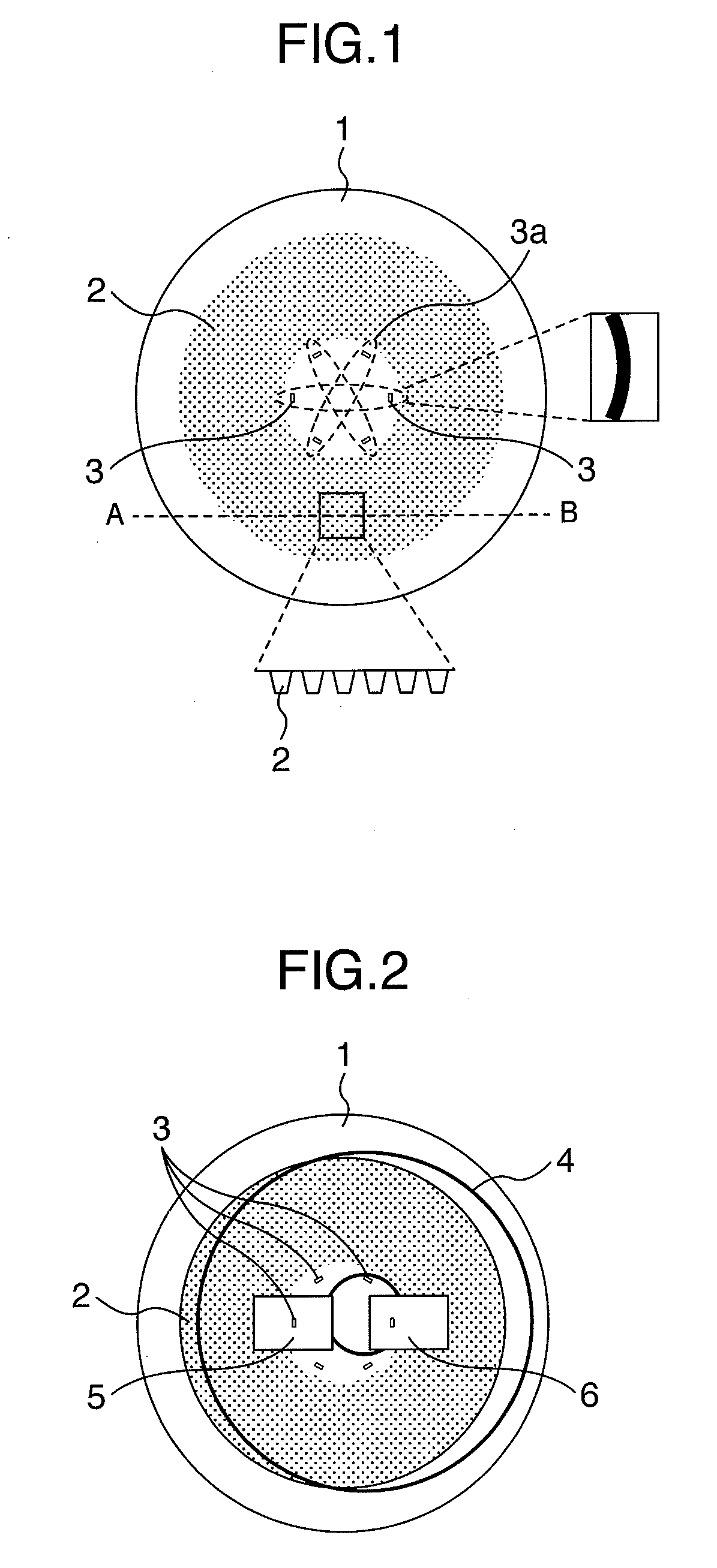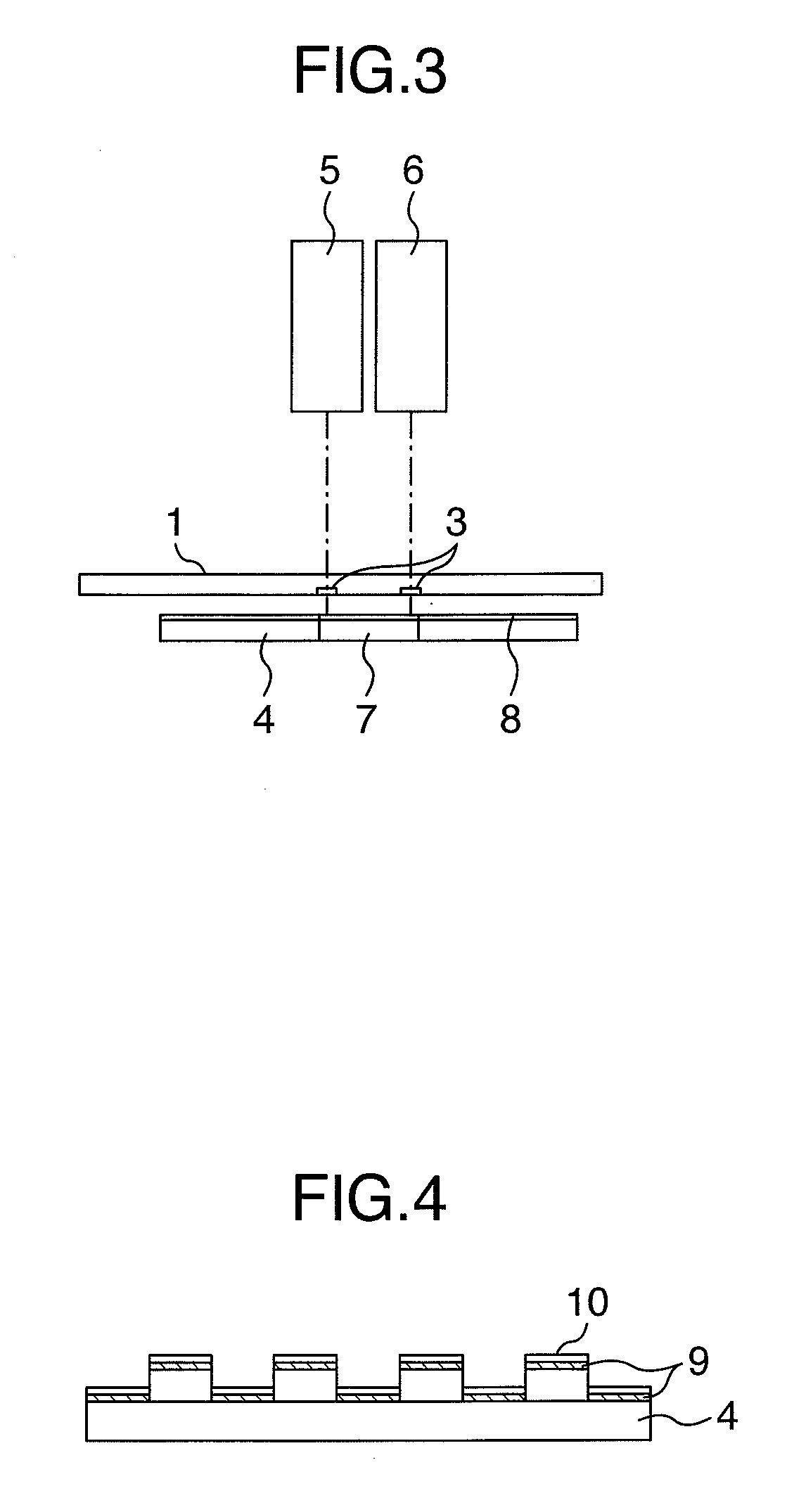Pattern forming method and its mold
a technology of pattern forming and mold, applied in the field of pattern forming methods, can solve the problems of reducing alignment accuracy, difficult to align accurately and repeatedly, and achieving high precision alignmen
- Summary
- Abstract
- Description
- Claims
- Application Information
AI Technical Summary
Benefits of technology
Problems solved by technology
Method used
Image
Examples
embodiment 1
[0046]FIG. 1 shows a top view of a mold 1 used in this embodiment. The mold 1 is made of a quartz substrate and is a disc with 1000 μm in thickness and 100 mm in diameter. A fine concavo-convex pattern 2 of 100 nm or less may be easily processed on the surface of the mold 1 using a well-known electron beam drawing technique.
[0047]The fine concavo-convex pattern 2 formed in the surface of the mold 1 is arranged on circumferences concentric to the center opening of the disc substrate. This concavo-convex pattern 2 is prepared as follows: first, a resist pattern is formed patterning a resist layer formed on the substrate by means of the electron beam drawing technique, and then, concave portions are formed on the mold 1 using the resist pattern as a mask by means of a well-known dry etching technique. The concavo-convex pattern 2 prepared here has a via structure having the cross section with 35 nm in diameter at the concave upper surface, 20 nm in diameter at the concave bottom surfac...
embodiment 2
[0063]A mold is prepared using the same method as that of Embodiment 1. In the concavo-convex pattern prepared here, a columnar structure having the cross section with 35 nm in diameter at the bottom surface, 20 nm in diameter at the upper surface, and 100 nm in depth, is arranged at intervals of 40 nm from pattern center to pattern center. Moreover, an alignment mark similar to that of Embodiment 1 is also formed.
[0064]For the disc substrate, a glass substrate manufactured and sold for recording media, the glass substrate being processed into 0.8 mm in thickness, 65 mm in diameter of the outer circle, and 20 mm in diameter of the center opening, is used.
[0065]The aligning method between the mold and the disc substrate, and a subsequent method of transferring a concavo-convex pattern to a resist layer which is applied to a recording surface of the disc substrate are carried out using the methods similar to those of Embodiment 1. With these methods, in the resin film is prepared a re...
embodiment 3
[0068]Next, a pattern forming procedure by nano imprint onto a silicon wafer is described using FIG. 6, which is a view schematically explaining a wiring pattern forming method in the case where a photo-curing type resin is used. A wiring pattern 12 is formed in a wafer 11. On this surface, an upper wiring layer 13 is deposited and a photo-curing type resin 14 is further applied (I). Next, a mold 15 in which a pattern is formed is brought closer to the wafer 11 from above the wafer 11, and after carrying out alignment between the mold 15 and the wafer 11 before contacting to each other, the both are relatively pressed to thereby form a pattern (II). The mold 15 is made of quartz and allows passage of light. By irradiating an ultraviolet ray from the back side of the mold 15 after pressing the mold 15, the concavo-convex pattern 2 of the resin film is cured (III). Removal of the mold 15 and removal of a base layer remaining at the bottom of the concavo pattern will form a resin patte...
PUM
| Property | Measurement | Unit |
|---|---|---|
| diameter | aaaaa | aaaaa |
| diameter | aaaaa | aaaaa |
| central angle | aaaaa | aaaaa |
Abstract
Description
Claims
Application Information
 Login to View More
Login to View More - R&D
- Intellectual Property
- Life Sciences
- Materials
- Tech Scout
- Unparalleled Data Quality
- Higher Quality Content
- 60% Fewer Hallucinations
Browse by: Latest US Patents, China's latest patents, Technical Efficacy Thesaurus, Application Domain, Technology Topic, Popular Technical Reports.
© 2025 PatSnap. All rights reserved.Legal|Privacy policy|Modern Slavery Act Transparency Statement|Sitemap|About US| Contact US: help@patsnap.com



